In the pursuit of workplace safety, an effective hierarchy of fall protection is crucial for mitigating risks and ensuring the well-being of workers. At FrenchCreek Fall Safety, we prioritize a systematic approach that aligns with industry best practices, creating a secure environment for every job. Let’s delve into our comprehensive guide on fall protection, exploring the preferred order of control to eliminate or reduce fall hazards.
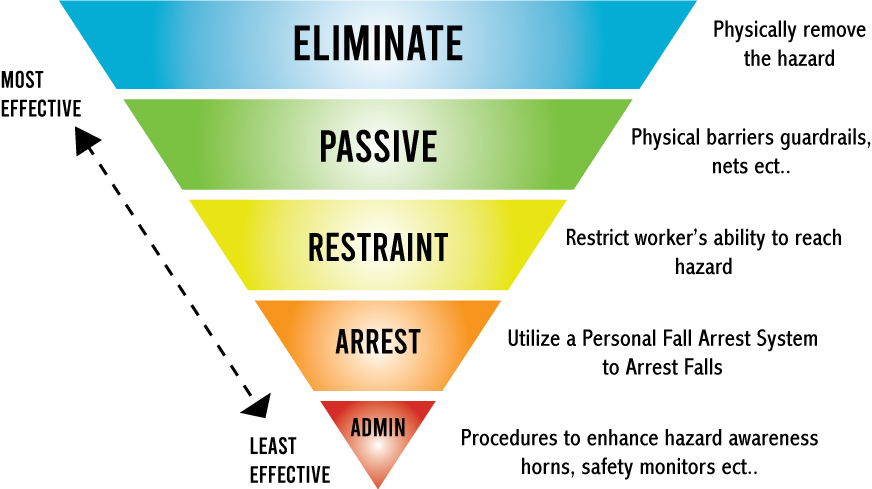
Understanding the Hierarchy of Fall Protection:
Definition: The Hierarchy of Fall Protection serves as a graded series of solutions, ranging from the most effective to the least. This systematic approach ensures a thorough evaluation of fall hazards, enabling the implementation of tailored solutions. The hierarchy, in order of effectiveness, comprises Hazard Elimination, Passive Fall Protection, Fall Restraint, Fall Arrest, and Administrative Controls.
hazard elimination
At FrenchCreek Fall Safety, we emphasize hazard elimination as the primary solution to fall hazards. In simple terms, if there’s no risk of falling, there’s no fall to worry about. While complete elimination of the hazard may not always be feasible, it’s crucial to consistently question whether changes in procedures, practices, location, or equipment could minimize exposure to the fall risk. Consider a scenario where a worker must assemble the equipment at a height – eliminating the fall hazard becomes possible if the assembly could occur on the ground and then be lifted into place.
Unfortunately, this isn’t always practical. In cases where hazard elimination is impossible, we move down the hierarchy. Nevertheless, employers are obligated to find optimal solutions that prioritize the well-being of their employees.
It might seem counterintuitive for a fall protection manufacturer like us to advise workers to eliminate fall hazards. Although our primary focus is on selling fall protection equipment, we prioritize the safety and well-being of workers, and removing the fall hazard remains the optimal choice.
passive fall protection
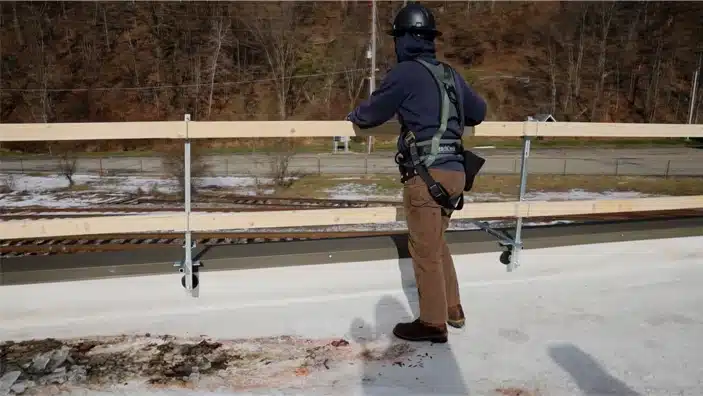
Descending the hierarchy of fall protection, passive fall restraint emerges as an optimal strategy when it’s impractical to eliminate hazards. Guardrails, safety nets, and other physical barriers not only protect against potential dangers but also grant workers the freedom to move without hindrance. The primary advantage of passive systems lies in their autonomy from the need for precise worker engagement. These approaches eliminate the necessity for workers to don safety harnesses or undergo specialized fall arrest training for a specific hazard area, given the absence of fall risk.
Safety professionals highly prefer these passive systems as they function effectively without demanding active involvement from workers. This diminishes the probability of human error, a significant factor contributing to workplace accidents. Passive fall restraint finds particular favor in permanent or semi-permanent facilities, such as factories, where regular work activities are carried out.
FALL RESTRAINT SYSTEMS
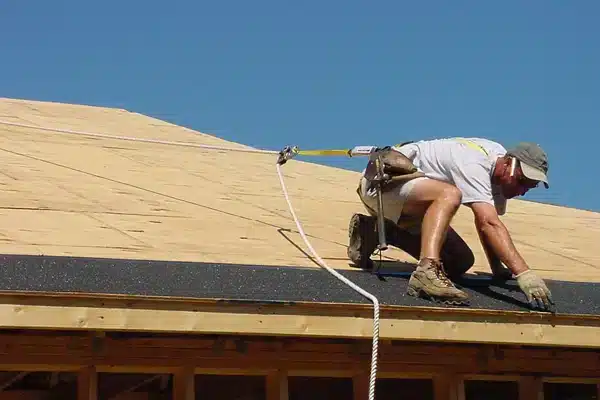
Restricting the movement of workers, active fall restraint systems prevent them from accessing fall hazards. By utilizing equipment such as full-body harnesses, lanyards, and connecting to an anchor point, workers can navigate safely within a designated access zone. Proper training is essential for the correct application of these methods, ensuring that each worker is well-acquainted with the intricacies of the equipment. This training also establishes a minimum requirement for clearance margins, providing sufficient fall distance before a worker encounters any lower-level obstacles or surfaces.
Active fall restraint systems prove beneficial in areas where removing or safeguarding the fall hazard with passive systems is not possible. Rooftops and leading edges are common areas where fall restraint is emphasized. Employing a rope lifeline and grab as a restraint system helps prevent workers from reaching the fall hazard at the edge of a rooftop.
Fall Arrest Systems
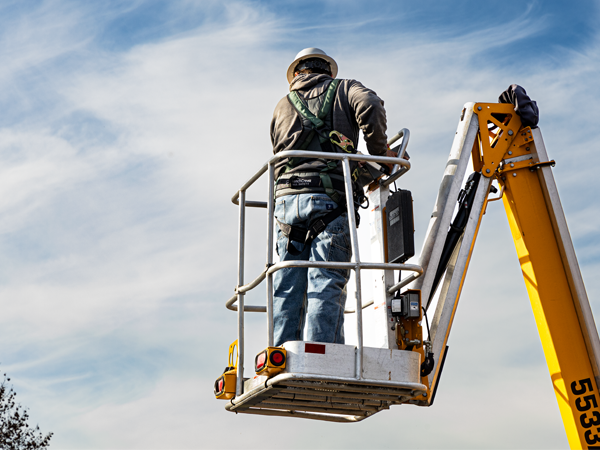
In the dynamic and unpredictable environment of a construction site, the fall arrest system plays a crucial role in scenarios where complete removal of fall hazards is not possible. Employing fall arrest systems is essential, as these mechanisms work to minimize swing-fall, freefall distance, and the forces exerted on the body in the event of a fall.
ABCs of fall protection
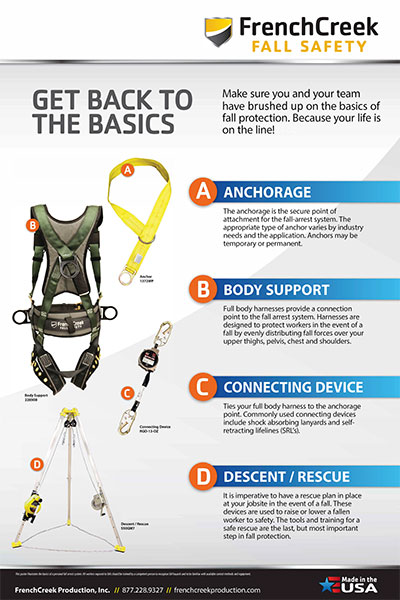
When recalling the components of a personal fall arrest system, always remember the ABCs of fall protection:
A.) Anchorage: The anchor / anchorage connection is the secure point of attachment for the fall-arrest system. The appropriate type of anchor varies by industry needs and the application. Anchors may be temporary or permanent.
B.) Body Support: Full body harnesses provide a connection point to the fall arrest system. Harnesses are designed to protect workers, in the event of a fall, by evenly distributing fall forces over your upper thighs, pelvis, chest and shoulders.
C.) Connecting Devices: Connect your full body harness to the anchorage point. Commonly used devices include shock absorbing lanyards and self-retracting lifelines (SRL’s).
D.) Descent/Rescue: It is imperative to have a rescue plan in place at your job site in the event of a fall. These devices are used to raise or lower a fallen worker to safety. The tools and training for a safe rescue are the last, but most important step in fall protection.
Using a Personal Fall Arrest System (PFAS) is crucial for ensuring worker safety in elevated work environments. It is imperative to highlight that extensive training and knowledge are required and encouraged for the effective utilization of a PFAS. Understanding the intricacies of the system, including proper fitting, inspection, and usage, is paramount to mitigating the risks associated with falls. Employers should prioritize comprehensive training programs to equip workers with the necessary skills and awareness, fostering a culture of safety and adherence to best practices in fall protection.
Administrative Controls
Administrative controls refer to work practices or procedures designed to enhance a worker’s awareness of fall hazards. It’s important to emphasize that administrative controls are the least favored protection method, as they do not offer a physical or positive means of protection.
These controls involve proactive measures aimed at lowering the risk of falls. Examples include safety monitors, warning lines, warning horns, designated areas, or controlled access areas. It is crucial to recognize that OSHA oversees the use of various administrative controls, and it is the responsibility of the fall protection program administrator to comprehend the relevant jurisdictions and regulations.
Fall Hazard Survey:
To get the ball rolling on implementing the Hierarchy of Fall Protection at your workplace, kick things off with a solid Fall Hazard Survey. It’s a smart move for employers to dig into these surveys, figure out the nitty-gritty of fall hazards, and come up with game plans that follow the rules and standards. Gather data regarding the frequency of worker exposure to fall risks and assess the severity of these risks. Ultimately, this survey plays a pivotal role in proposing remedies to mitigate the occurrence of falls.
FrenchCreek is committed to implementing top-tier fall protection strategies, prioritizing the Hierarchy of Fall Protection, and thoroughly engaging in surveys to ensure a safer work environment. You can rely on us to formulate customized solutions that prioritize the well-being of your team, adhering steadfastly to the highest safety standards. If you encounter a complex fall protection application or have inquiries about any of our products, please do not hesitate to reach out to our sales team. Wishing you safety at height.